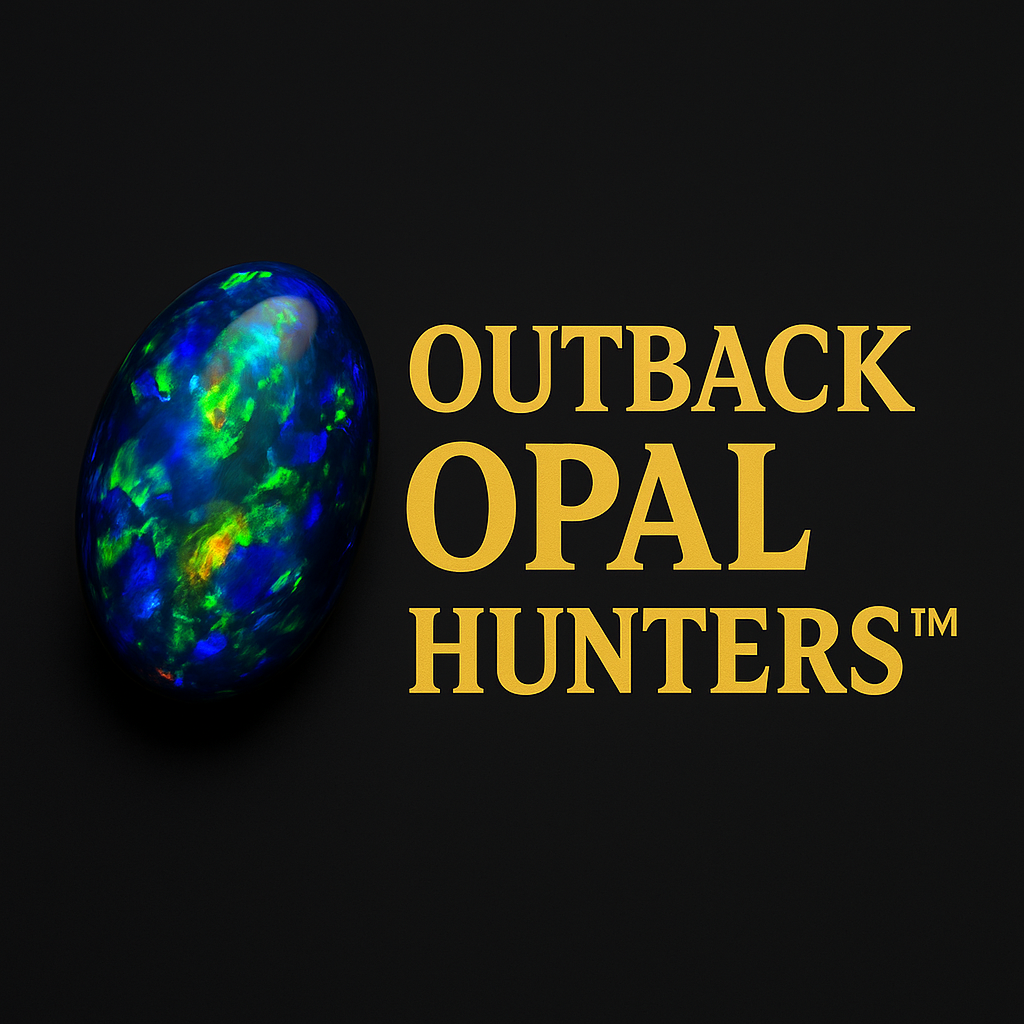
Welcome to
Outback Opal Hunters™
Real Australian opal. Real people. Independent to the core.
Step into the opal fields—where ancient ground, bold diggers, and rainbow fire collide. Outback Opal Hunters™ is an independent UK brand built in the spirit of Lightning Ridge, Coober Pedy and beyond. We celebrate real people, real stones, and real stories—from rough and specimens to finished jewellery and expert know-how. If you’re a gemmologist, miner, jeweller or just mad for colour—you’ve hit the motherlode.
Coming soon:
- Shop: rough & cut opal, jewellery
- Rock Licker™ apparel
- Guides & grading
- Limited drops & auctions
**Independent UK brand — not affiliated with any TV programme, broadcaster, or production company.
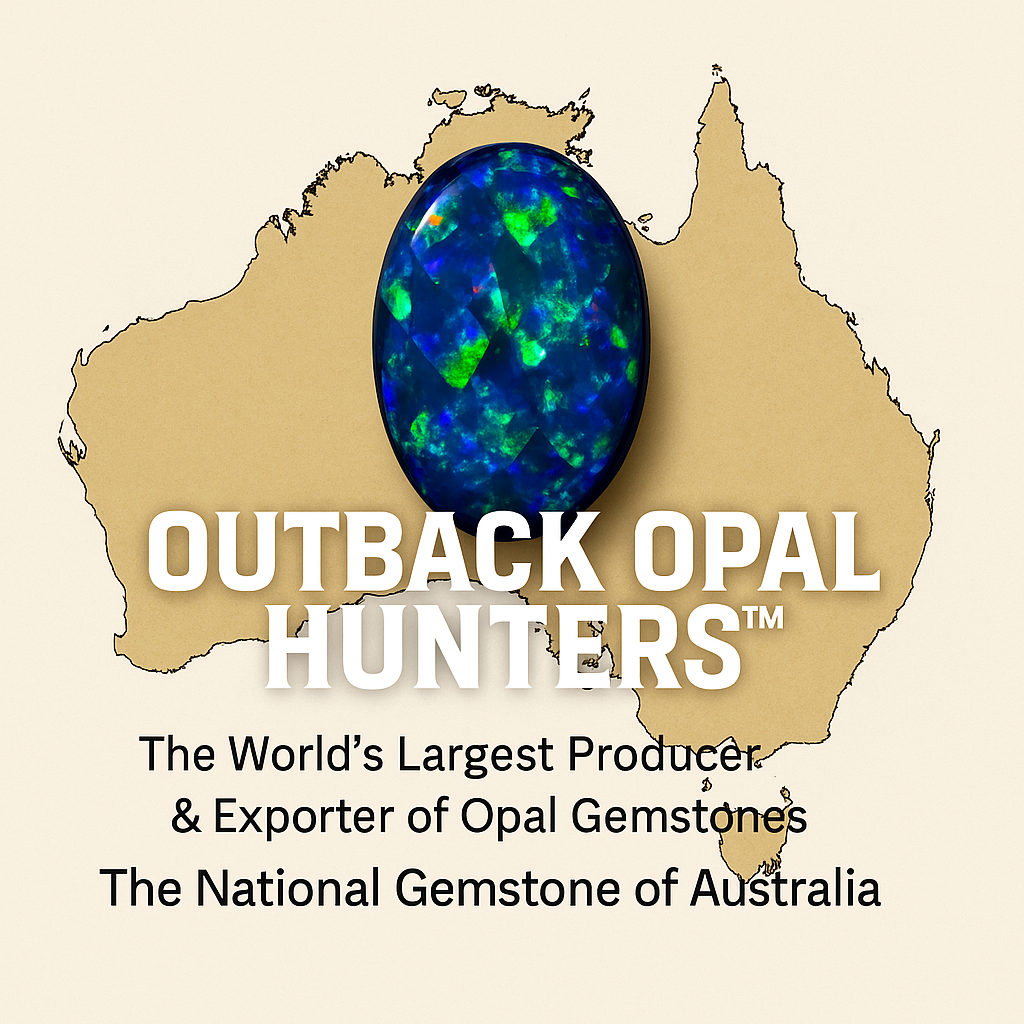
Gem of Australia
Opals of Australia
Large Stocks of opal rough from the Mining Fields of
- Lightning Ridge & Grawin
Wee Warra Plains, Coocoran, Allawah, Jag Hill & more - Queensland
Koroit, Yowah, and Winton - South Australia
Andamooka, Coober Pedy, & Mintabie
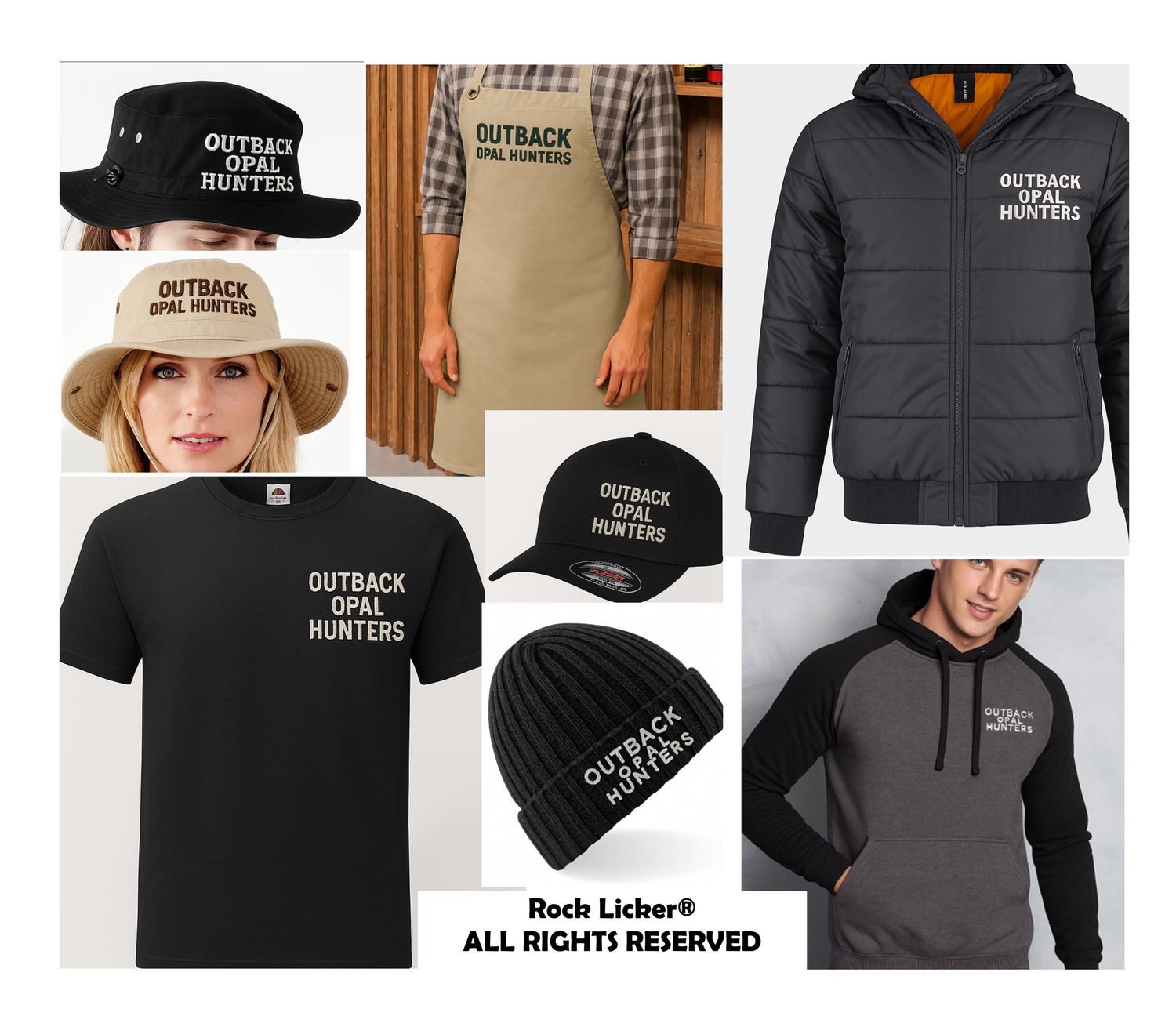
Rock Licker™ UK
Rock Licker™ Outback gear for opal people.
Born in the cutting shed, built for the field, designed for the street. Rock Licker™ creates original apparel for miners, cutters, jewellers and anyone obsessed with fire. All designs are our own — bold, durable, and made for real use.
Coming soon:
- Tees, hoodies, caps, work smocks & aprons
- Limited drops + collector patches & pins
- Artist collabs & field-tested workwear
- Size guides, pre-orders & wholesale enquiries
Trademark & brand notes:
Rock Licker™ is an independent OFM brand.
“Outback Opal Hunters™” is used on apparel under licence from its UK owner (application UK00004208834).
Independent brand — not affiliated with, endorsed by, or sponsored by any TV programme, broadcaster, or production company.
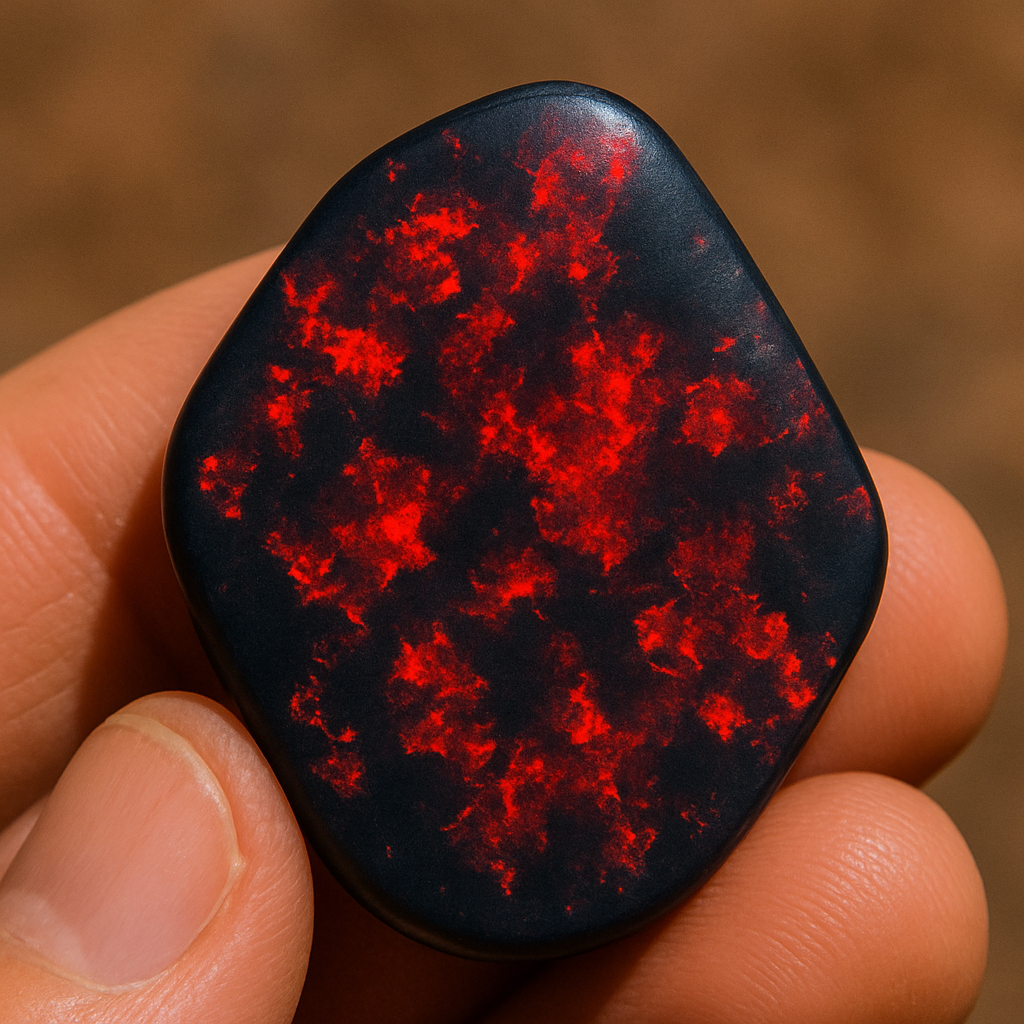
Elusive Red on Blacks
What the miners are chasing is the rarest and most valuable of all: blazing red fire on jet-black opal bases, with body tones ranging from N1 to N4.
Massive stock of premium-grade red-on-black rough / rubbed / polished opals.
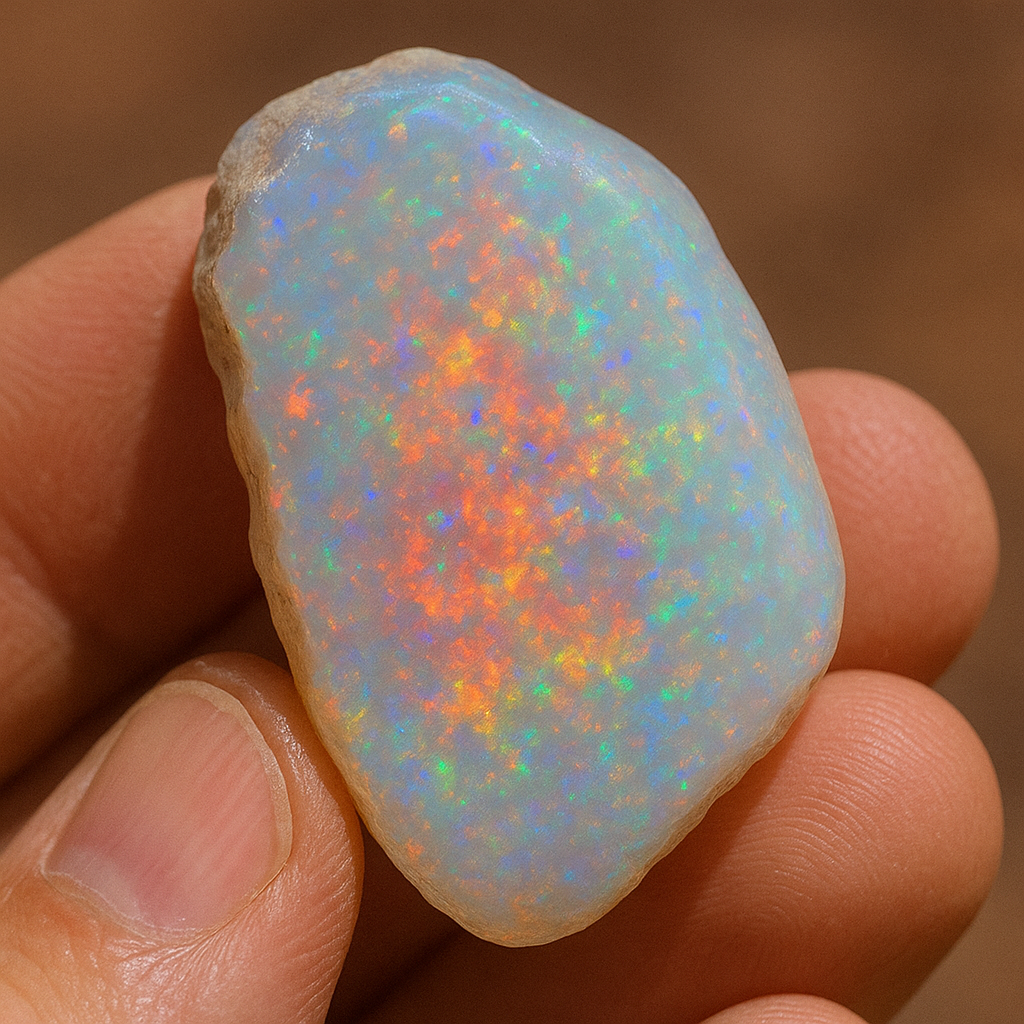
Opal Capital of the World
Coober Pedy The Desert of Dreams.
Beneath the scorched red sands of South Australia lies Coober Pedy, the legendary "Desert of Dreams," where fortunes are carved from the earth in flashes of fire and colour. This remote opal mining town is world-famous for its underground homes, moon-like landscape, and the lure of striking it rich with a single pick. Here, the heat drives life below ground, but the opal fields above have fueled a century of hope, grit, and glory. It's a place where dreamers dig deep — and sometimes, the desert answers.
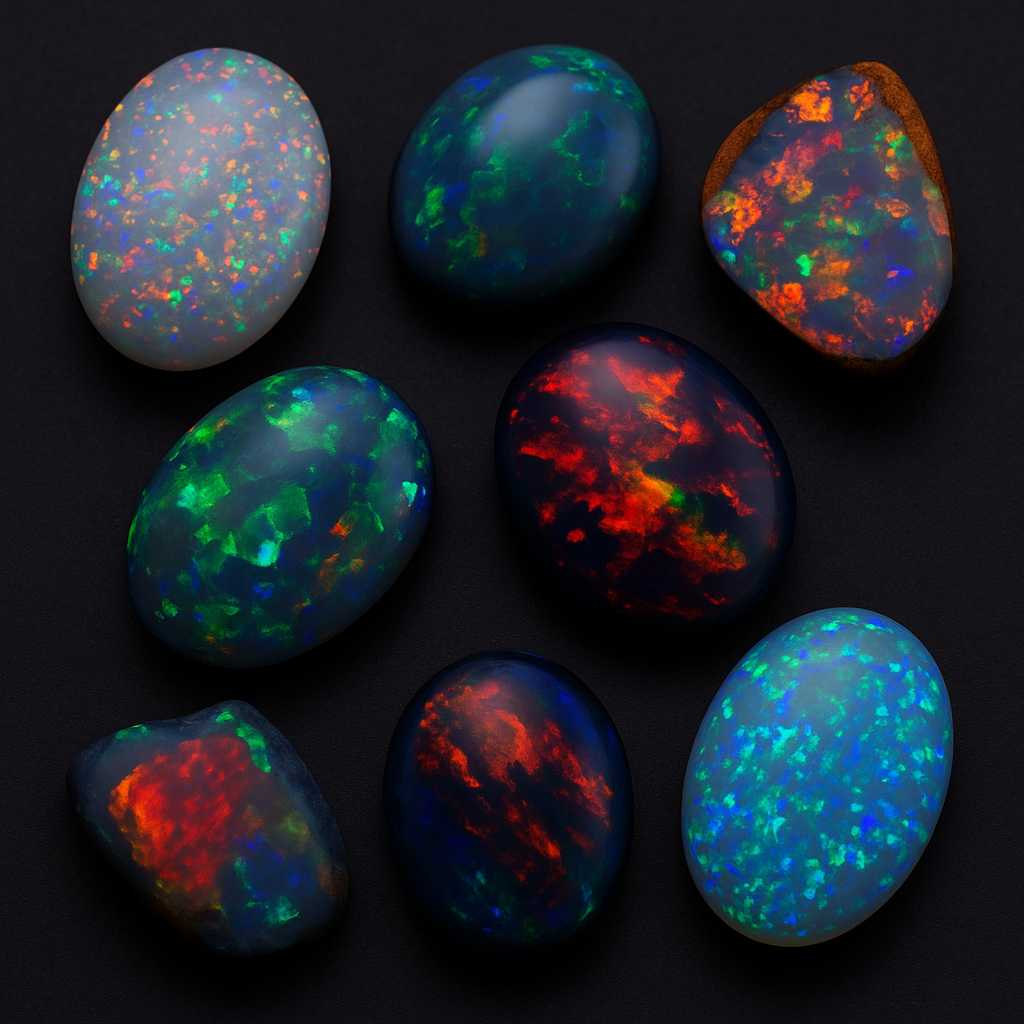
The Art of Lapidary
💎 The Art of Lapidary – From Rough to Radiance
Every gemstone begins its life in the raw — a chunk of nature, unshaped and full of hidden fire. Lapidary is the ancient craft of revealing that fire. It’s where vision meets precision. A dance between eyes, hands, and wheels.
From a rough opal riddled with potch, sand, or fracture lines, the lapidarist must read the stone’s story:
Through careful cutting, dopping, and polishing — layer by layer — the stone is transformed. Pits become domes. Cloud becomes clarity. Mute turns to fire. Each finished gem is a one-of-a-kind expression of nature’s brilliance, refined by the human hand.
In lapidary, we don’t just polish stones.
We reveal the soul of the Earth.
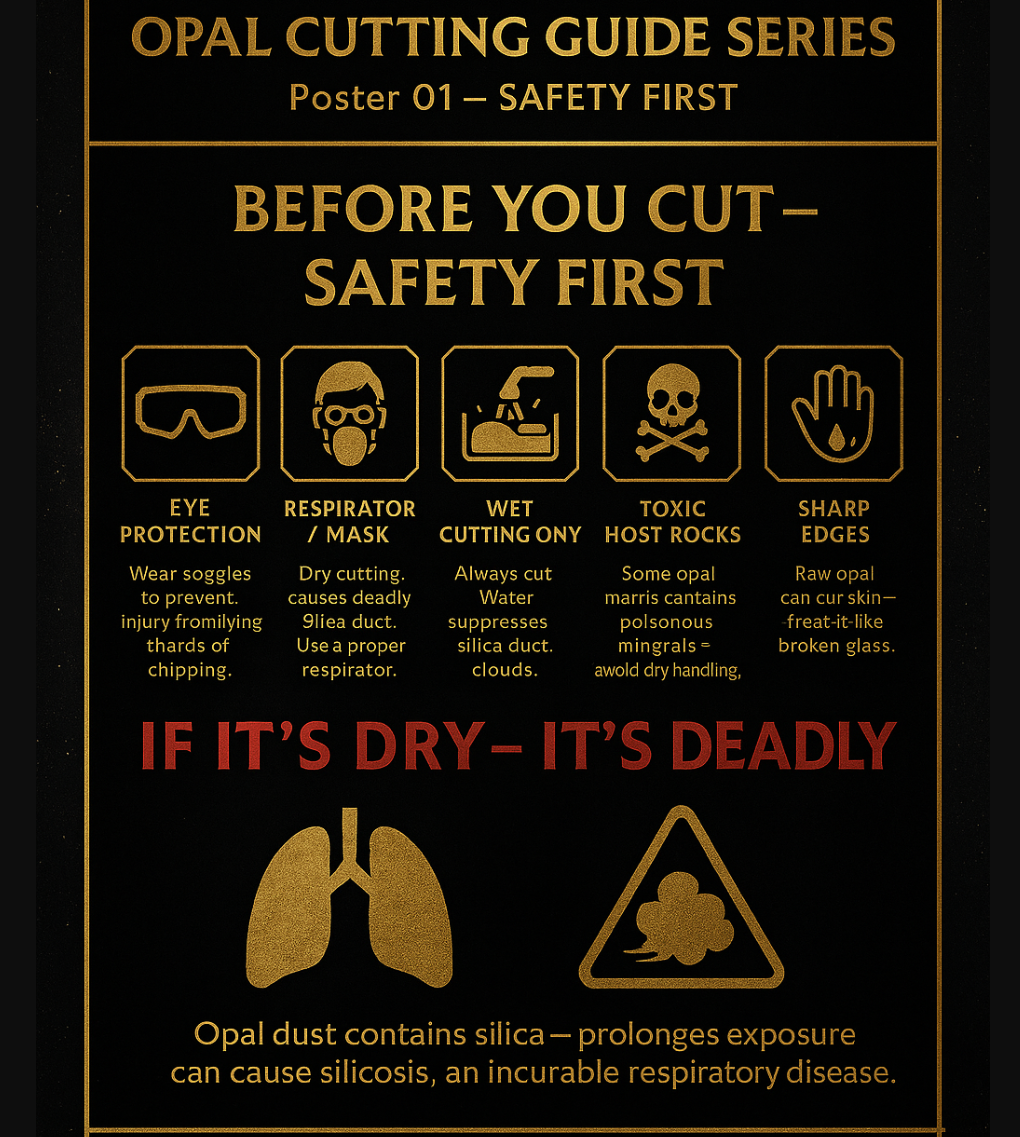
🦺 SAFETY FIRST
🦺 OUTBACK OPAL HUNTERS™ – SAFETY FIRST GUIDE
WARNING:
Never dry grind opal.
Opal contains fine silica that becomes airborne during dry cutting, posing a serious health risk. Inhaling this dust can lead to silicosis, lung disease, and long-term respiratory damage.
Always use water when cutting or grinding opal to suppress dust, wear proper PPE including a certified respirator, and clean up with wet methods only. Silica dust is invisible, permanent, and deadly — safety first, always.
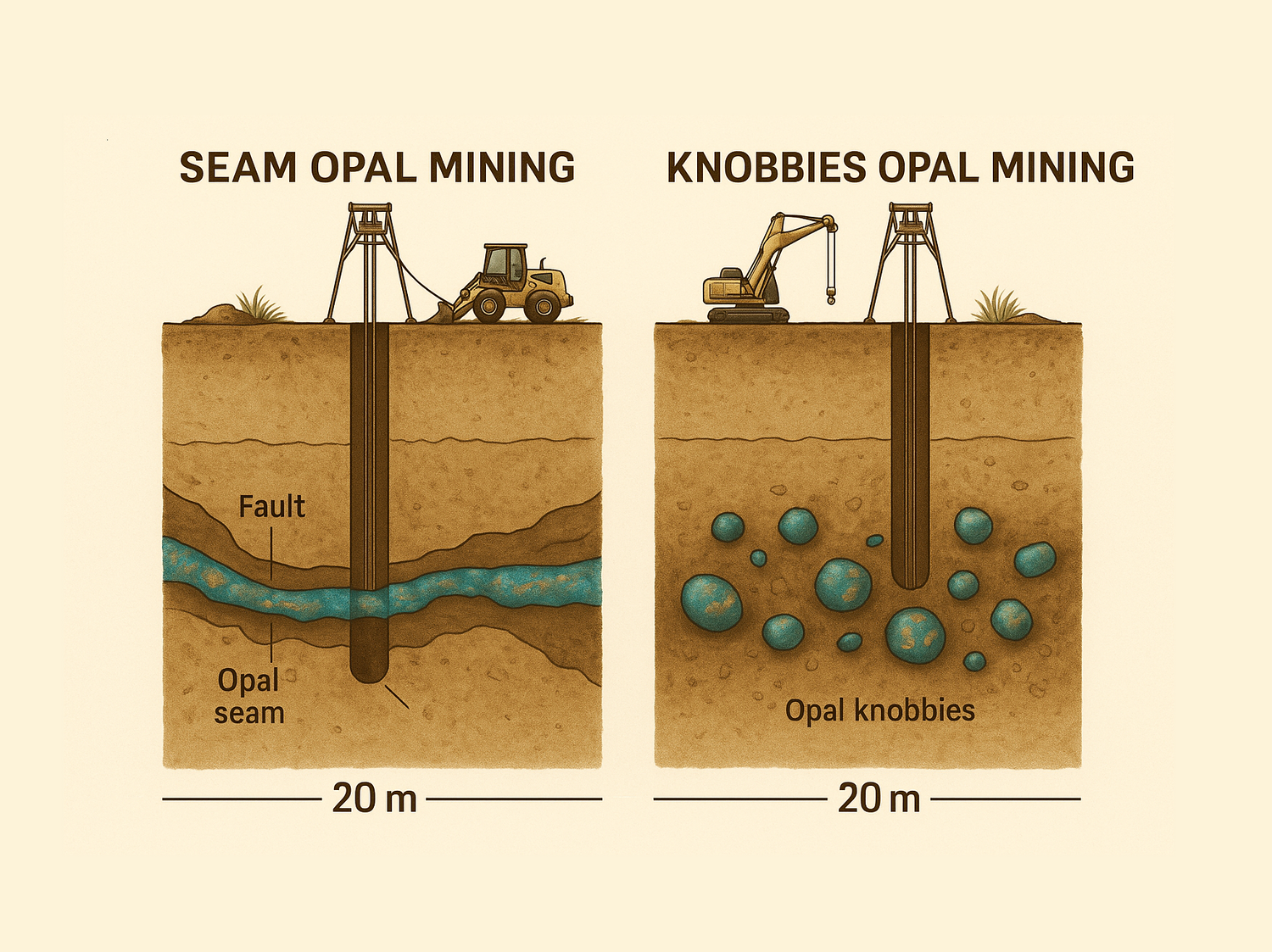
🪨 How Knobby & Seam Opals Are Mined
Knobby and seam opals are mined using different techniques depending on the geology of the opal field.
Knobby opals are typically found in nodule-like formations, often deep within ironstone or sandstone layers, while seam opals form in thin horizontal layers or “seams” along bedding planes in sedimentary rock. Miners use a combination of hand tools, jackhammers, tunnelling machines, or bulldozers depending on field conditions. In places like Lightning Ridge, miners often work underground through shafts and drives, carefully extracting material with minimal damage to preserve the opal. Once brought to the surface, the rough is carefully broken or sliced to reveal colour bars and determine its cutting value.
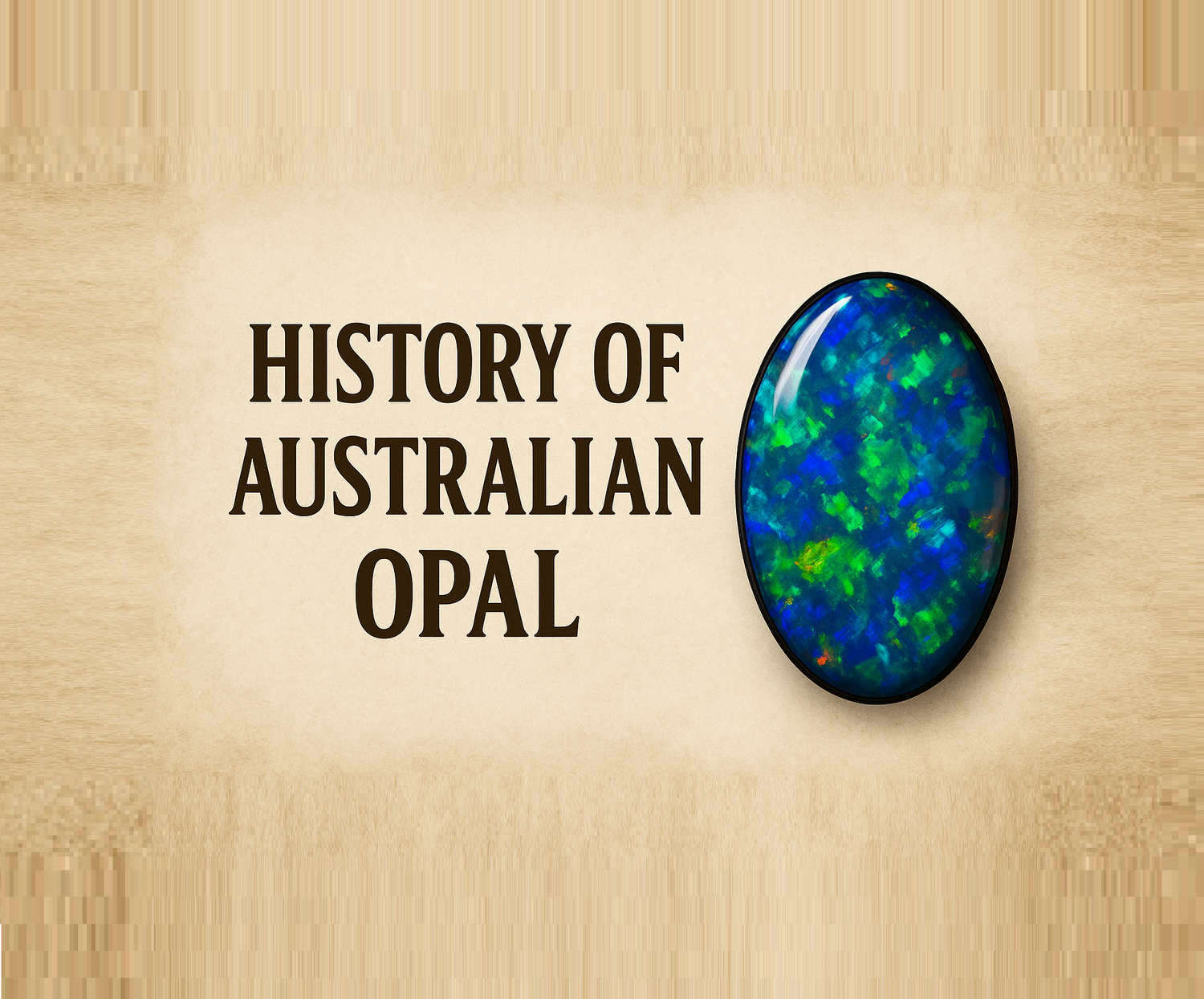
💎 The History of Australian Opal
Australia is the undisputed opal capital of the world, producing over 90% of the planet’s precious opal supply. The story of Australian opal dates back millions of years, formed from silica-rich water trickling through ancient sedimentary rock. As the water evaporated, it left behind silica spheres that slowly stacked in perfect grids — creating the brilliant fire and colour play we now know as opal. The first major opal discoveries in Australia were recorded in the late 1800s, but it wasn’t until the early 20th century that fields like White Cliffs, Lightning Ridge, Coober Pedy, and Andamooka began booming. By the 1960s, Australia had overtaken all other countries to become the world’s largest producer and exporter of opal gemstones.Today, Australian opal is internationally recognised not just for its beauty, but for its rarity, quality, and diversity — from fiery black opals to crystal-clear white and boulder varieties. In 1993, opal was officially declared the national gemstone of Australia.
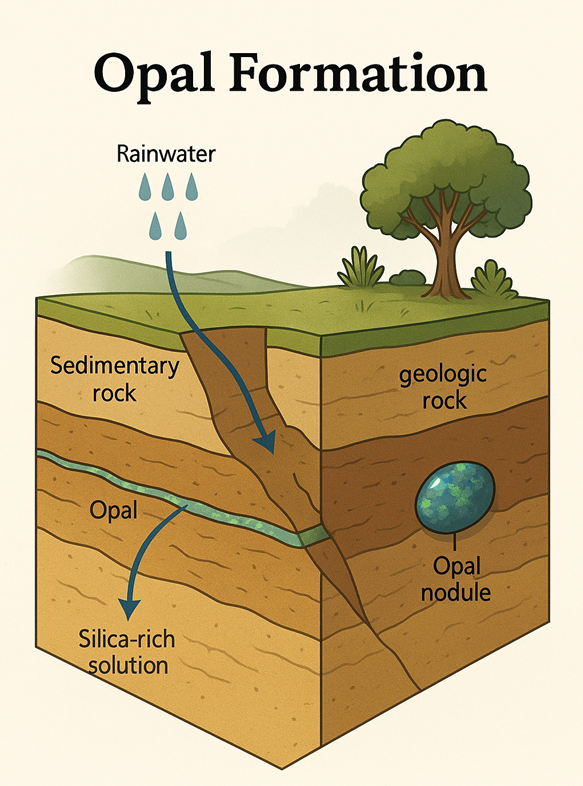
How Opal Is Formed – The Sedimentary Process
Australian opals are formed through a sedimentary process over millions of years. Unlike volcanic opals found in other countries, Australia's precious opals originate from ancient inland seas and weathered sandstone basins.
After the great Eromanga Sea receded around 100 million years ago, it left behind a vast landscape rich in silica-bearing rock. Rainwater, slightly acidic and rich in dissolved silica (SiO₂·nH₂O), percolated down through the sandstone layers, filling cracks, voids, and faults created by ancient geological movements.
Over time, this silica-rich solution accumulated in underground cavities, often between 20–30 metres deep, forming within sedimentary layers, in collapsed sandstone, including wood, shells, and bones and following ancient vegetation. As the water slowly evaporated, it left behind microscopic silica spheres. In rare and perfect conditions, these spheres stacked into a three-dimensional lattice, diffracting light to create opal’s brilliant play of colour. When spheres are irregular or disordered, they form common opal or potch.
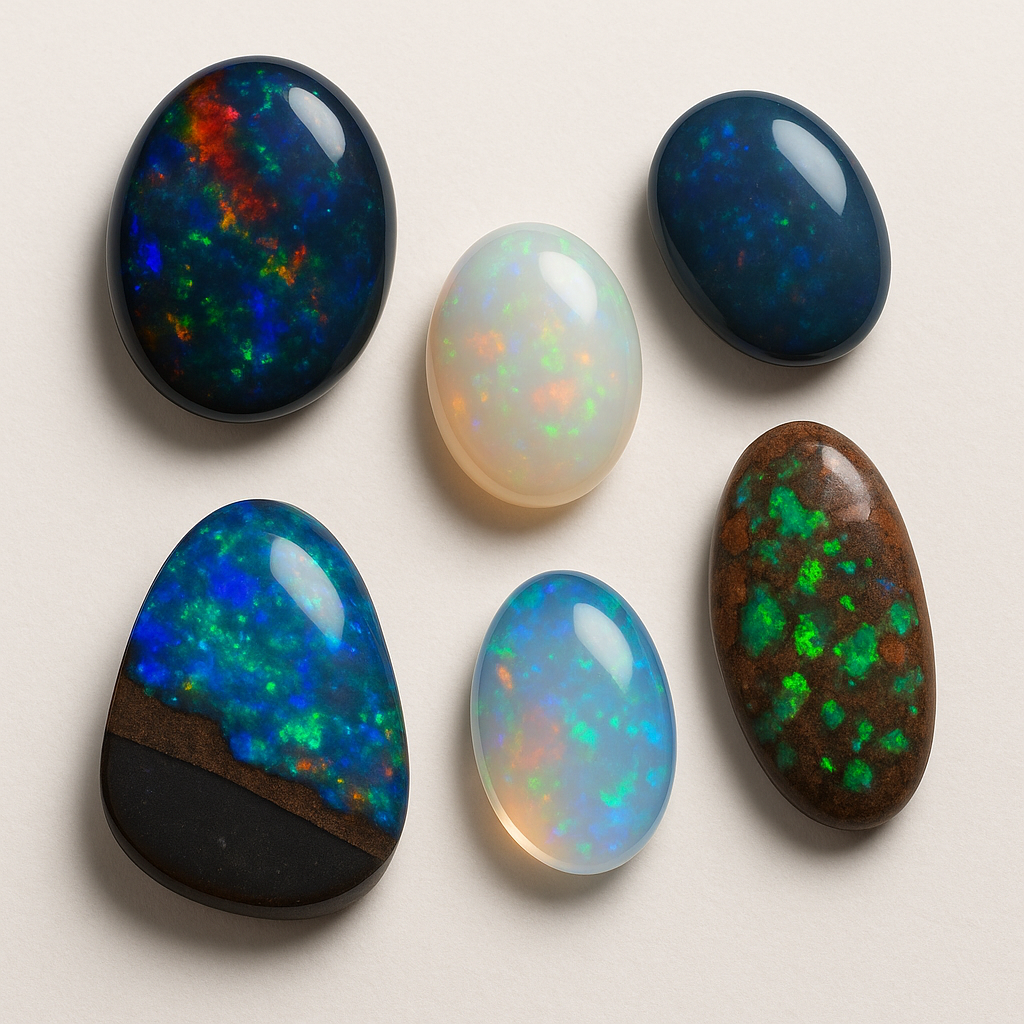
Types of Opal
Opal comes in many natural forms, each with its own character. Black Opal is the most valuable, with bright fire on a dark base. Dark Opal shows similar contrast but with a slightly lighter tone. Light Opal has a pale or white body and soft pastel fire. Crystal Opal is translucent, with colour that seems to glow from within. Boulder Opal forms in ironstone and shows dramatic natural patterns. Matrix Opal is speckled with fire throughout the host rock. Treated opals like carbonised Andamooka and composite doublets/triplets are man-enhanced and must always be declared.
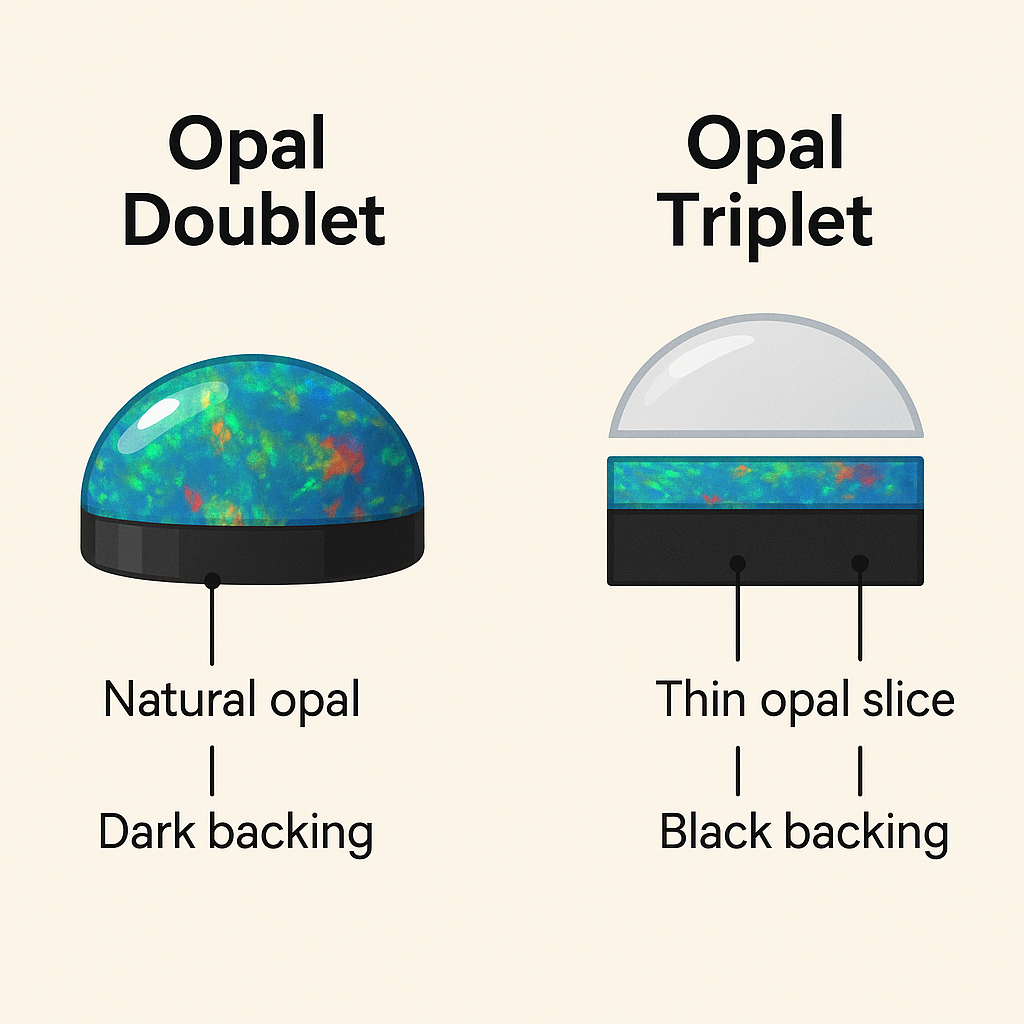
Understanding Doublets & Triplets – Epoxy Layering and Pigment Use
Opal doublets and triplets are composite stones made by layering thin slices of precious opal onto a black backing, often using epoxy resin. To enhance contrast and simulate a natural dark base, black oxide pigment powder is commonly mixed into the epoxy. This darkened adhesive not only strengthens the bond but also deepens the visual impact of the opal’s colour play. In triplets, a third layer — a clear quartz or glass cap — is added on top to protect the delicate slice and magnify its fire.
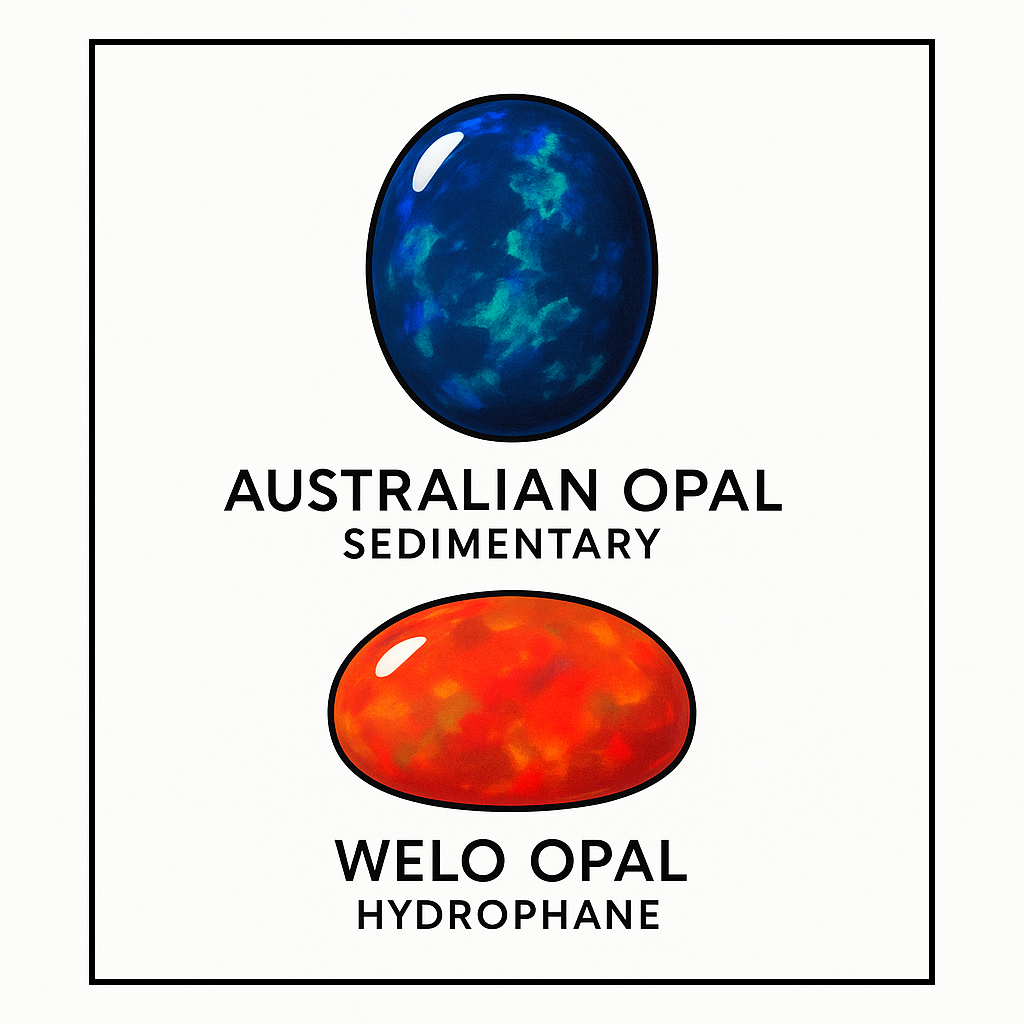
🇦🇺 Aussie Opal vs 🇪🇹 Welo (Ethiopian) Opal
Not all opals are created equal.
Hydrophane opals from Ethiopia can absorb water like a sponge, turning milky, cracking, or even going clear when wet. They’re volcanic in origin, unstable when exposed to moisture, and can be risky in jewellery — especially rings.
By contrast, Australian opal is sedimentary, formed in stable sandstone over millions of years. It doesn't absorb water, doesn’t fog up, and holds its fire for life. That’s why Aussie opal is the gold standard — cut once, worn forever.
💎 Choose sedimentary. Choose Aussie. Choose forever.
Contact Outback Opal Hunters™

